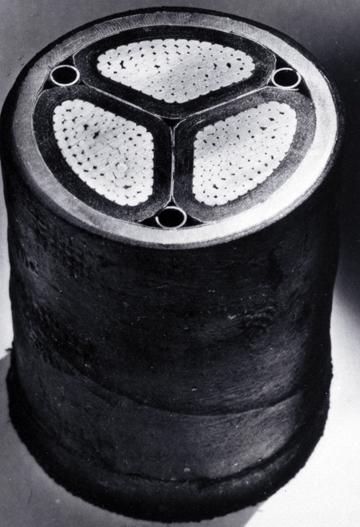High-quality and correctly selected electrical wiring will always help to protect any room from unpleasant "surprises" associated with short-circuit currents , breakdowns of insulation, burn-out of wiring, ignition of household appliances and others. You can avoid such unpleasant situations and incidents. To do this, you must initially pay close attention to the cable section.
Most people who decide to do electrical wiring independently and without the help of specialists do not fully understand the importance of the procedure during which the cable section will be selected. Even the use of the new and modern technologies themselves may not save from the above problems if the cross-section of the current-carrying cable is incorrectly selected.
In the process of selecting the cross-section, all factors must be taken into account: the size and duration of the load, the nominal current strength that will pass through the cable, the maximum and minimum voltage, and the load power. It is necessary to check the conductor for resistance to high temperatures (both the environment and overheating due to short circuits), for mechanical strength and resistance to possible external damage. Undoubtedly, the cross-section of the cable depends not only on the above properties and parameters. It is necessary to take into account the individual differences in wiring, and even the influence of the external environment and its factors on the conductor.

The most important indicator when choosing a section is the reliability of the cable, its quality. Here the most optimal option can be called copper. It is much more resistant to the negative effects listed above than the aluminum cable. The copper conductor will be more efficient, and also it is much worse at oxidation and deformation processes. Thus, the cross-sectional area of the copper cable will be less than that of aluminum, provided that their other characteristics are identical. Yes, and purely visual copper conductor will look better.
When choosing the cable cross-section by power, it is necessary to take into account the total power of all possible devices. It is very important. Naturally, it is more convenient to choose a cable section with a margin. Also take into account its length and the possibility of voltage loss.
The term "cable section" refers to its cross section. In electrical engineering, it is determined by several calculated parameters: compliance with the heating conditions, conditions of mechanical strength, and the estimated economic current density.
Generally speaking, the correct calculation should imply the presence of formulas. However, you can use specially designed tables with the main parameters to select the cable section: power, current, sometimes the voltage in the network. Such tables can be found in manuals on the electrical installation of equipment. There are already calculated data for cables of various sections made of various materials, taking into account most of the possible factors. The values of correction factors are also indicated, for example, if necessary, lay the cable at low temperatures.